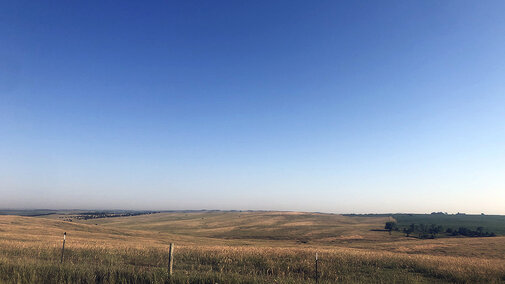RFV and RFQ
Forage tests today contain two values summarizing feed quality. While similar, understanding the unique differences of each is important to accurately value a forage. Today we will look at Relative Feed Value or RFV, and Relative Forage Quality or RFQ.
For many years, we have used a forage testing system that measured two different types of fiber called NDF and ADF. We used NDF to estimate how much hay cows would eat, and we used ADF to estimate how much energy they would get from that hay. Then we combined those values to give an overall estimate of forage quality that we called RFV, which stands for relative feed value.
RFV did a fair job of estimating digestibility of legume hay, but its major flaw is assuming all fiber has the same digestibility. We know that is not true, and it especially misrepresents the forage quality of grasses. Grasses have more fiber than legumes, but grass fiber usually is more digestible than legume fiber. For many years, there was no other forage test available at an affordable cost that was any better.
Eventually, low-cost tests were developed that did a good job of measuring digestible fiber. Forage scientists and animal nutritionists have worked together with these tests to also revise the intake and energy estimates so results from these tests predict how animals will truly perform much more accurately. With these new tests, a new overall estimate of forage quality was developed, which is called RFQ, or relative forage quality.
While this new RFQ test is especially useful when testing grassy hays, it also has been proven to be better with alfalfa and other legumes. So, when you test forages in the future, look for labs that offer relative forage quality. Your numbers will be more accurate.
Pasture Fertility Management
High fertilizer prices have livestock managers questioning potential returns regarding pasture fertilizer investments. And positive economic returns will depend on final fertilizer cost, value of pasture or hay, grass growth response and risk.
For pasture management, the highest risk regarding paying for fertilizer is possible lack of water or rainfall after applying the nutrients. Risk is lowered when irrigation is available and/or when grass meadows have supplemental sub-surface water.
Our UNL NebGuide, “Fertilizing Grass Pastures and Hayland,” G1977, provides fertilizer rate recommendations. Overall, Nebraska research indicates that for each one pound of nitrogen fertilizer applied, there is about one pound of additional calf or yearling body weight gain. This guideline assumes adequate harvest efficiency where either grazing animals consume increased forage produced by the fertilizer and/or extra biomass is hayed. Remember that native grasses naturally respond less to fertilizer than cool-season grasses such as brome, orchard grass or wheatgrasses.
So, this may be a time to redirect your fertilizer investment dollars. If moisture becomes more available during winter, prescribed burning patches or entire pastures to stimulate improved growth and grazing may be a good option. Also, adding cross-fences and watering sites to subdivide pastures will allow more grass rest periods to increase forage production.
If possible, divide pastures into at least three or four separate grazing paddocks. Then, move cattle through the pastures based on growth rates. When plants are growing more rapid, rotate cattle to the next pasture every three weeks. Then, when hotter temperatures stall grass growth, slow down the rotation such as moving the cattle every six weeks until favorable weather conditions promote rapid growth again.

